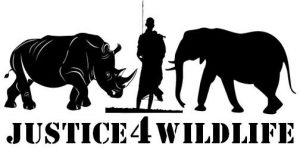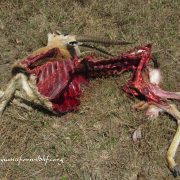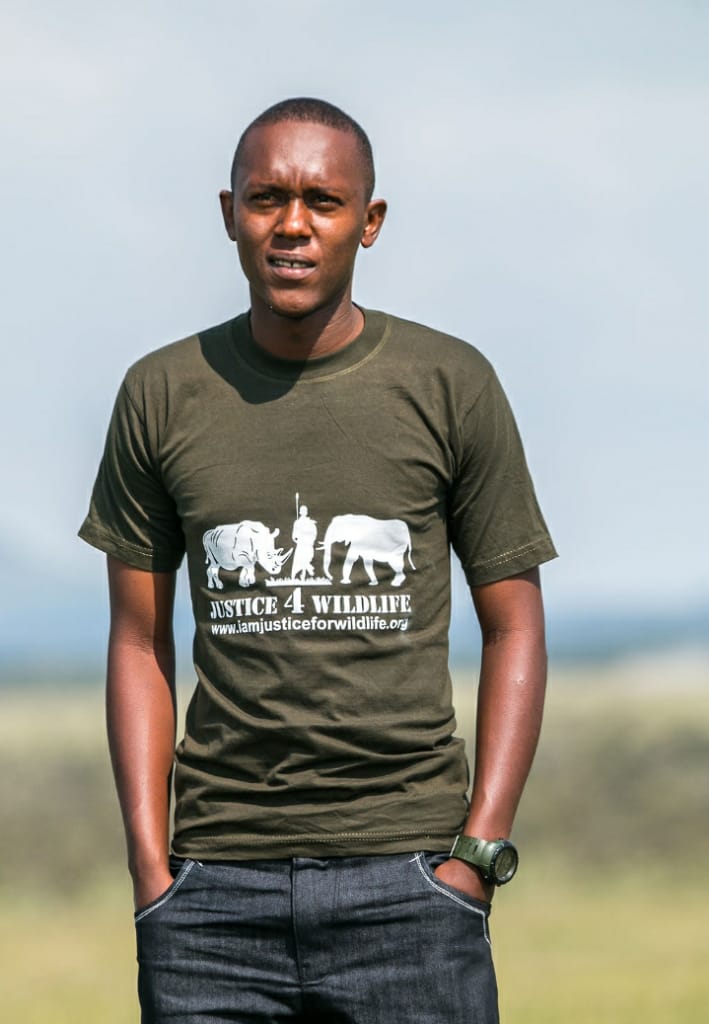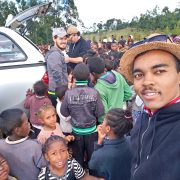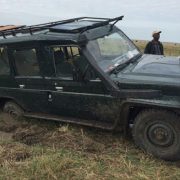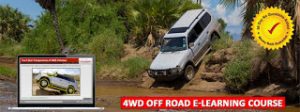Alberto Borges is a Young National Geographic Explorer, an Honorary Member of the Scientific Exploration Society—UK, and the Founder of The Explorer’s Club of Kenya and magazine which was first published in 2014. Presently, a 3rd year at Catawba College.
The previous days’ desert run from Marsabit to North Horr had obviously tired us out. A not-so-cosy bed and a lukewarm shower were comforting but the high temperatures gave us a restless and sleepless night.
At the crack of dawn I watched several desert birds such as the Jackson’s hornbills, crowned starlings and fan tailed ravens forage scraps of food in the sand. It seemed strange as I couldn’t figure out what they kept picking out from there. The locals were now taking their goats and camels for grazing; a typical day in North Horr was beginning.
As there is little to do for a visitor, except to visit any of the three oases and engage locals in ‘chitter-chatter’ on how and what their goats feed on for the day. We however, decided to conquer North Horr’s only highest spot, Daban-Dabli some 1000 ft a.s..l, but only a few hundred feet above the surrounding terrain, and a few miles north of the settlement. It was not an easy climb, since it was steeper than it had seemed. The summer sun scorched us mercilessly.
However, once we got to the top, we had an excellent view of the surroundings, open glades below and Mount Kulal on the southern horizon. The breeze was pleasantly cool and refreshing.
On our return to the settlement, we saw a herd of Thompson gazelles prancing away to a safe distance. A local cautioned us against climbing down from the steeper incline as there was a high chance of encountering hyenas.
In the middle of our delicious mbuzi choma (roasted goat meat), slaughtered by the locals to welcome our arrival, the D.C received a call with sad news. Some 130 miles from here en route to the border town, Ileret, at an oasis called Darate, two lorries transporting relief food to Ileret were barred from proceeding due to ethnic differences of Gabbra (Kenyan) and Dassanach (Ethiopian) people who frequently crisscrossed the border. The situation was made worse by the killing of four Gabbra men by the Dassanach herders during this period.
The Dist. Commissioner (DC) summoned the O.C.S, the O.C.P.D, the area chief and about twenty police officers. After a long discussion, the DC concluded that they must immediately rush to the troubled area, and try to bring peace to the two communities who were then preparing for war. I thought this would be a perfect time to tour and explore one of Africa’s most remote regions and to understand the hardships of the people living there. I requested the D.C for me to tag along as an observer and to my surprise he agreed. However, he made it clear that it was highly risky as the area could turn to a battleground if things didn’t go as planned and that my life would be at jeopardy. None the less, I was excited to experience the adventure in a totally new way.
We sped off just after lunch in a convoy of two Land Cruisers in a westerly direction, churning up huge clouds of dust. The scenery quickly changed from sand dunes to pans and barren lava fields giving us an impression that we were on the surface of the moon.
For two hours the track was relatively smooth and progress was fast as we drove at nearly 100km/h in straight stretches.
The track then climbed for several hundred feet until we reached a fertile plateau as compared to desert standards, locally known as Little Chalbi. Here I saw hundreds of camels and thousands of goats grazing in lush meadows however there seemed tbe no people let alone huts.
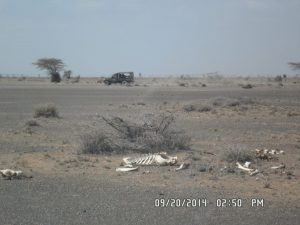
Leaving drought stuck North Horr heading to Derate
The track quickly meandered out of sight; the Cruiser snarled its way over thickets and ruts. With no GPS or mobile network, our phones had long been rendered useless.
I consulted my map only to find out, Little Chalbi which lay approximately between 3 – 4 North of the Equator and 36 – 37° East of the Greenwich, wasn’t even indicated on the map I had. We were now off the beaten track when out of the blue it reappeared.
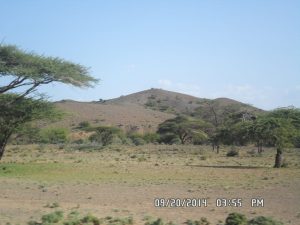
Little Chalbi
We drove through several rock strewn lagas (dry river beds) off Puckoon Ridge. I had the impression that we were in a time capsule travelling thousands of years back in time, as I had not seen even one person for nearly a hundred kilometres. The landscape was untouched by humans; the little vegetation cover was dry or maybe dead. It was wild, slowly weathering and seemed to come to life during short violent flash floods.

Puckoon, Ridge, East of Sibiloi National Park
I noticed strange tall birds that were least bothered with neither the Cruisers’ diesel grunt nor the deep rumble or the stones being thrown by the tyres whenever we abruptly came to a laga. Their heads were always tilted at a forty five degree angle and didn’t move as we whizzed by. They seemed deeply engrossed with what they were doing. These huge birds are known as the Kori Bustards; the world’s highest flying birds.
The journey was getting more rough and torturous; dusk was beginning to engulf us and several nocturnal creatures were awakening. Night jars were flying off from the ground, bush hares scampered off the road, jackals and dik diks were often being seen near thickets, their eyes glowing in the dark. Suddenly we saw a camp fire, tens of men and hundreds of goats on the side of the road. We ground to a halt in an area called Darate. The foliage was dry, with small ridges covered with lava fields and dry bush. Further ahead, was an oasis fringed with palm and acacia trees surrounded by two hills and several lagas. There was a wind blown dilapidated police post with a communication radio as their only connection to the outside world.
The officers jumped out of the Cruiser and went to interrogate the men. The area M.P, a member from Marsabit County Assembly and other Gabbra men had been spying on neighboring Dassanach people and plotting against them. They however told the D.C. they were mourning the death of the four Gabbra men who were killed by the Dassanach.
We drove to the police post further ahead where we saw the two lorries we heard about earlier, their drivers and turn boys and nine Dassanach people, mostly women and children had hitched a ride to Ileret. The D.C. summoned the M.P and the member of M.C.A for a discussion along with the O.C.S and the O.C.P.D. It was now dark and the meeting took place under a tree with the clear, star studded sky as the only source of lighting. Meanwhile, two goats, respectfully donated by the M.P to the D.C were being slaughtered. This would soon be our supper.
During daybreak, the following morning, I was taken aback by the immense strength of the wind as I walked around the camp. Engaging the officers in small talks revealed that I wasn’t the only one who had a rough night. Most officers slept on bare ground whilst a few others in the back of Land Cruisers trying to get cozy and warm. I managed to squeeze my self and sleep awkwardly in the cabin of a Cruiser. It had been a long, lonely and sleepless night for everyone.

Desolate wilderness roamed by tough nomads and survived by hardy plants
As we had breakfast, which comprised of tea made with goat milk, army biscuits and a few groundnuts the D.C had carried, there was a lot of confusion on what was the days’ plan. Everyone had their own imaginary plans but it was up to the D.C to decide on what next. He consulted the O.C.S and the O.C.P.D and not long after, they arrived at a decision. We would escort the lorries to Ileret where the relief food was desperately needed.
The next leg of the journey began at about mid morning; progress was slow due to the lorries and yet again several lagas where one had to drive slowly and cautiously. After a mere 10Km, the convoy suddenly came to a halt. We saw an old Dassanach man who was carrying a rifle and head rest cum stool. The D.C stepped out of the Cruiser to enquire the man’s activities. He took my binoculars with him of which somehow made him more superior… well, from a local’s point of view at least. The old man told the D.C that some twenty donkeys of his strayed away at dawn, one of which was a new born foal.

In the background are the wind swept structures that the Administrative Police once lived. This is one of the most remote police posts in E. Africa
He suspected that they went to the oasis to quench their thirst, just near the police camp as he pointed at the hoof prints along the track. I clearly remember seeing donkeys around the camp earlier, however it seemed nobody else did.
We continued clipping off miles of dry, desolate uninhabited wild country as the hours past by. There were several dry bush birds I kept seeing, such as Kori bustards, red and yellow barbets, chest-bellied sand grouse, yellow necked spur fowls, vulturine guinea fowl, superb starlings, fan tailed ravens and Jackson’s hornbills. All this time, Lake Turkana was beckoning us but was unseen, our view blocked by ridge after ridge. However, the tracks had gradually changed from small lava rocks to smooth sands which hinted we were getting closer to the lakeshore and border town. Suddenly, many huts and small structures appeared and soon, children were chasing after the convoy. We had reached.
Ileret is a small outlandish cluster of Dassanach settlements. There are fisheries stores, N.G.Os and missionaries and of course the lakeshores which are home to crocodiles and hippos. The D.C assigned an officer to take me to the lakeshores in his Yamaha motorbike whilst they discussed the situation.
The lake was beginning to flood its shores and the waters were calm and had a deadly brownish hue, this was contrary to what I was expecting. Tales of early explorers that I had read, to Lake Turkana told of the waters being jade in color, just like the oceans yet rougher than the North Sea. The brownish hue was being caused by siltation from the over flooded Omo River which was carrying sediments from the Ethiopian Highlands.
At this time of the year, the over forty varieties of fish are more in the north than in the south as the sediments bring in nutrients hence breeding occurs. The fishermen harvest high yields of fish and the lake is teaming with plenty of water birds.
After spending some time by the shores, we headed back to the town, at the police station where the rest were having yet another goat meat lunch. We then toured the new Lake Turkana Basin Institute founded by Dr. Richard Leakey to study various fossils that he and his team discovered in Koobi Fora. Later, we began our return journey to North Horr which took us more than five long hours through the boundaries of Sibiloi National Park. We arrived in North Horr by 9.00p.m safe and sound but tired, dusty and hungry.

Darate Oasis
Interested in Joining the explorers club? Get in touch through any of their contacts below
THE EXPLORER’S CLUB OF KENYA,
P.O.BOX 39939-00623
NAIROBI, KENYA CALL:+254 706 561 519
EMAIL: explorers club- kenya@gmail.com FACEBOOK: THE EX- EXPLORER’S CLUB KEN- YA.
TWITTER:@explorersclubk
INSTAGRAM: explorersclubkenya
“For most of history, man has had to fight nature to survive. In this century he has to realize that in order to survive he has to protect it.” Jacques-Yves Cousteau Here we celebrate the unsung wildlife heroes in the grassroots doing remarkable work to conserve our wildlife heritage, Get to learn about wildlife from a ranger/ ecologist in Kenya a freelance eco-traveler, experience the diverse cultures and African heritage from the natives and take an adventure to new destinations to learn about rare attractions that are hardly talked about and to top it all up some of the best wildlife photographs that will make you reconnect to your wild side appreciate everything around us and fall in love with the natural world, because “It is not enough to love the natural world; the point is to defend and preserve it.” Edward Abbey
Our wildlife, our responsibility. When it comes to standing up for our wildlife it’s better to be outspoken than unspoken.
